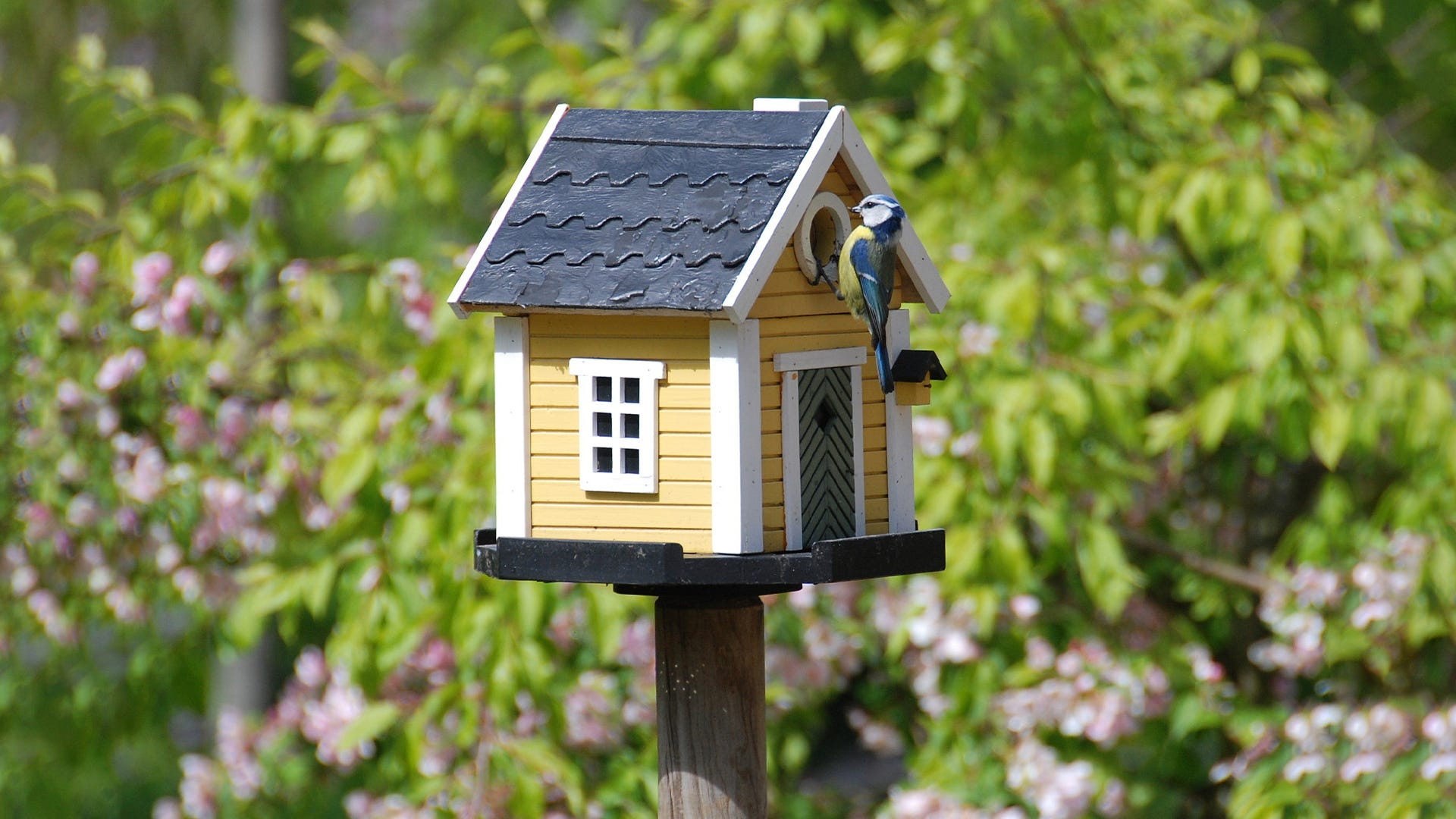Birdscaped backyards provide birds with bird feeders and seed-producing plants for food, native plants for hiding and nesting, and water sources for drinking and bathing. Try birdscaping with these 10 tips for attracting more birds!
1. Multiple Feeders Attract More Birds
Providing multiple bird feeder styles and foods attracts more birds to your backyard. Simultaneously offering sunflower, thistle (aka Nyjer®), peanuts, fruit, jelly, suet, and mealworms will attract the greatest variety of bird species to your birdscape. You can also purchase bird feeders and bird seed blends that increase the attractiveness of your backyard for specific species you're interested in.
2. Birds Feel Safe with Natural Shelter
Adding trees, shrubs, and flowers to your backyard enhances its seamless, natural feel for the birds. Native plant life gives birds protection from predators and nesting space for raising their young. Birds thrive when you enrich their water source with water-side plants, which they use for hiding spots when predators are in the area. Adding a few logs and rocks to your garden complements the flowers, trees, and shrubs, providing the same protections and comfort for birds during winter months.
See also: Lawn Care With Birds in Mind3. Bird Baths Aren't Just for Bathing
Birds need year-round sources of fresh water for their drinking and bathing needs. A birdbath doesn't have to be anything large or elaborate–just a shallow, sloped water source with a rough surface to grip onto, such as terra-cotta, and an ideal water depth of 1 to 3 inches. Feeder birds are used to the elevation of bird feeders, so they enjoy elevated water sources. A ground-level birdbath creates the most nature-like pond for the birds and also attracts bird species that prefer feeding from the ground or low-hanging platform feeders. For colder months, heated bird baths are optional but not necessary. You can also just offer a small dish of water each day, making sure to bring it in when it starts to freeze.

4. Moving Water Gets Birds' Attention
Birds love gently moving water. A waterfall or dripping feature attracts feeder birds and will also attract birds that may not visit your bird feeders. Bird-oriented ponds differ from decorative ponds because they blend in naturally with the surrounding environment and landscape, letting birds view your pond as an extension of their natural habitat.
See also: 8 Things You Should Know Before Installing a Bird Bath5. Clean Water Is Crucial for Birds' Health
Birds use water for drinking and bathing, so it's always a good idea to empty and refill birdbaths daily and clean them regularly. Fresh, clean water is a must-have for bird health, as some bird diseases can spread through contaminated water. Water features and pumps can double as filtration systems, but it's always a good idea to periodically drain and clean your water source, making sure that you don't use cleaning chemicals that could be harmful to wildlife.
6. Parent Birds Use Nest Boxes to Nurture Their Young

Nest boxes (aka birdhouses) help birds in spring and summer find a safe place to raise their nestlings free from predators. Sometimes birds even lay another clutch of eggs in the same nest that season. The entrance-hole size determines what species will use your nest box. Not all birds are cavity nesters, but at least 46 North American bird species are known to use nest boxes. Offering nest building materials such as fallen leaves and twigs will also attract birds to take up residence in your yard.
7. Roost Boxes Keep Winter Birds Warm
Wintering birds need shelter, and roost boxes are a cozy place to escape the elements. More birds can roost together than would fit in a typical nest box, and roost boxes are designed to trap in heat.
8. Color Catches the Bird's-Eye View
Birds have an extremely developed sensitivity to color and are attracted to bright colors not commonly found in nature. You can use colorful and flowering plant species to add a splash of color to your birdscape so birds on the fly can spot your bird oasis from the sky. The Cornell Lab of Ornithology's Yard Map is a great resource for helpful hints on birdscaping your backyard.
See also: 6 Native Plants That Will Attract Hummingbirds to Your Regional Garden9. Birds Love Seed-Producing Plants
Seed-producing flowers and plants are a welcome food source for birds such as towhees, sparrows, quail, finches, and doves. It's best to use native plants in the course of your birdscaping because they are already adapted to your region's climate and local birds are used to them already.
10. Thriving Ecosystems Foster Bird Populations
Plants are far more than just visually attractive. They are a crucial part of the ecosystem of your backyard. Seeds, fruits, and nectar provide sustenance for songbirds, butterflies, bees, and hummingbirds while also providing a food source for native insects. Many birds rely on insects to feed their young, so maintaining healthy numbers in populations of native insect species is a critical element for sustaining a growing population of birds.








